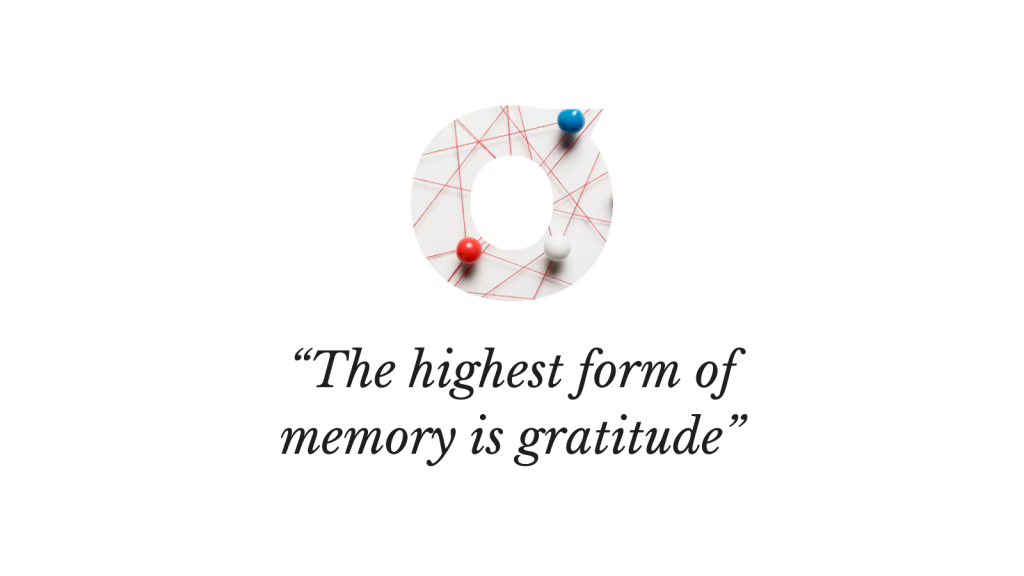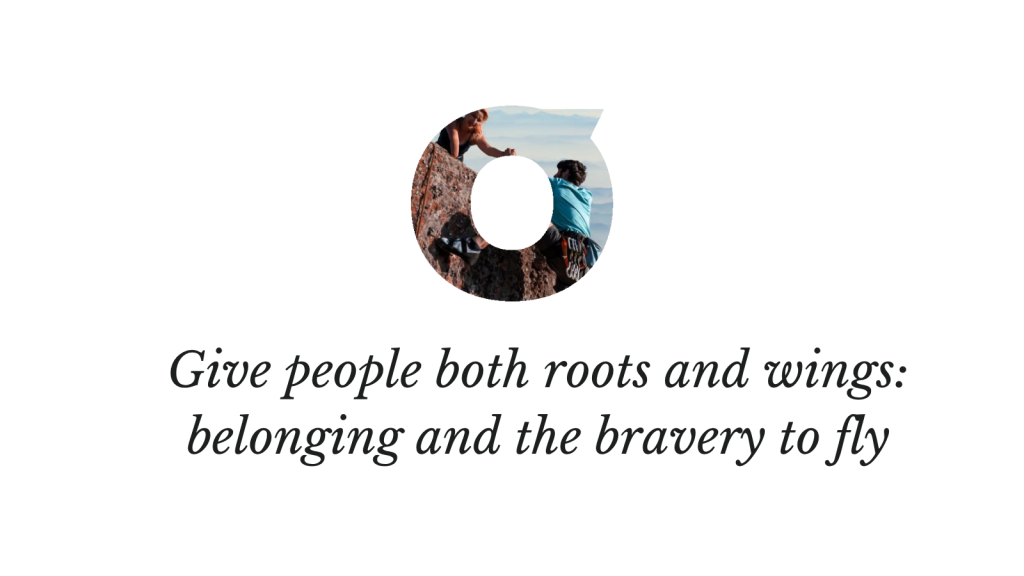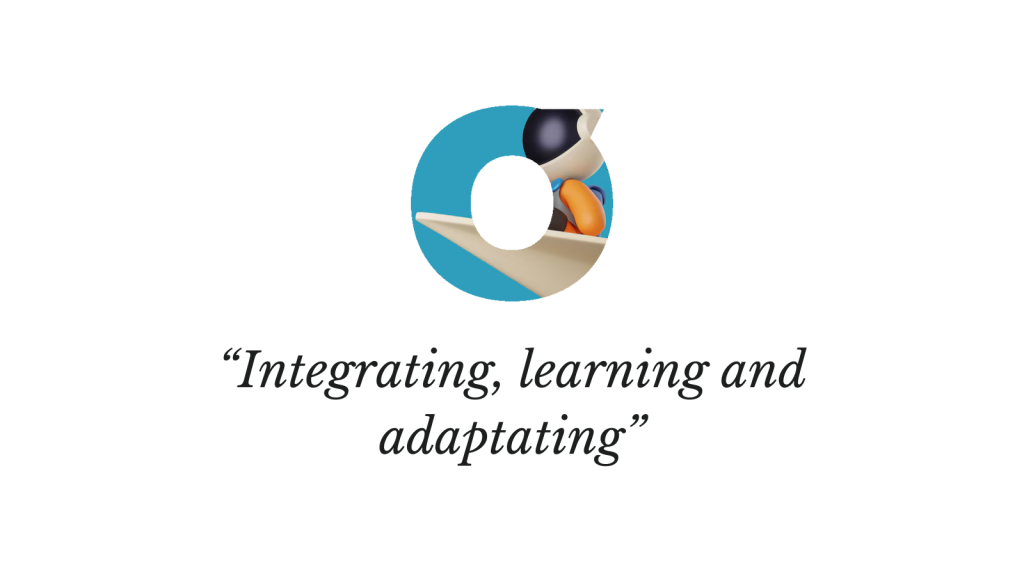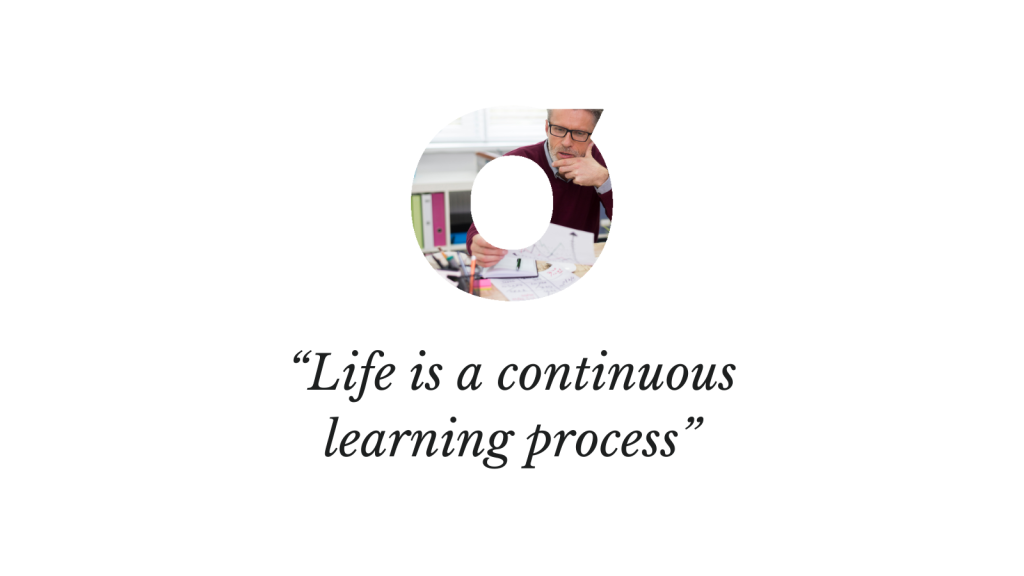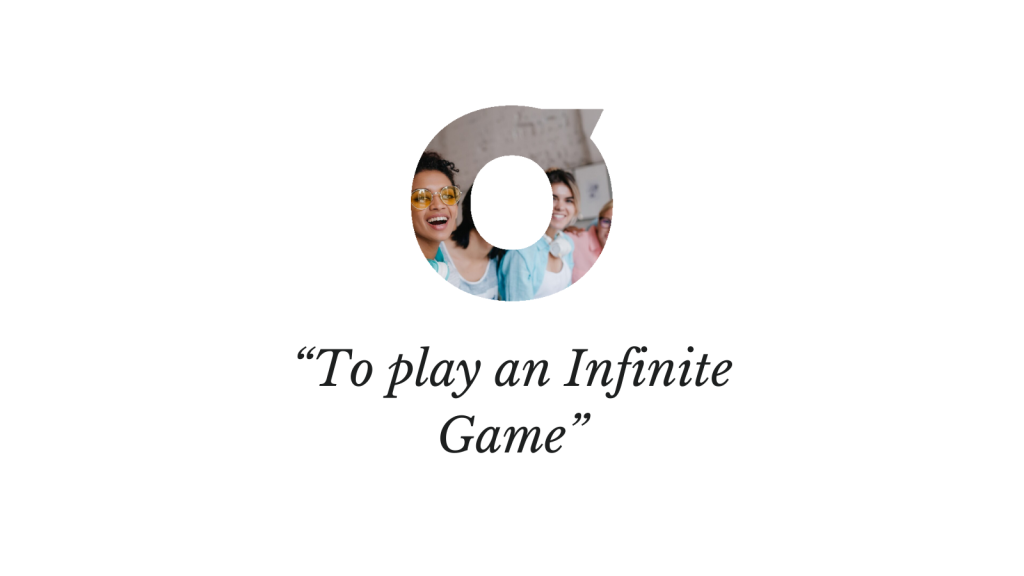
He’s well-known for his work in networking and relationship management, as well as for creating BNet2Connect (networking services and training) and the Networking Gym. He’s also involved in AIDP as a National Vice President and leads BnetYoung to support young people entering the job market.
Interview with Marco Vigini by Violena Paci
How would you define the concept of a network?
A network is the web of relationships that each of us has built over time, in which we are embedded and of which we are a central node.
We all have a huge but often forgotten and/or undervalued asset: our relationships – strong, weak, occasional, dormant bonds with people we haven’t spoken to in a long time, which, if managed with method and care within a framework of value, can become an explosive mix.
Is networking a skill or an innate talent? Is it something we can train?
It is a COMPLEX SKILL to be learned and made fruitful, both at work and in daily life. It is fundamental to communicating our capabilities, presenting our brand and value, unleashing collaborative intelligence and creating synergies.
It needs to be trained, structured and practised with METHOD and CONSISTENCY.
Networking skills could be compared to a sport that requires training and preparation to achieve high performance.
First you have to:
- Understand what it is
- Activate it
- Apply method and consistency,
- Measure its impact and value created within our ecosystem.
Why is it important?
In a world where everything is connected, the identification of professional and personal opportunities, skills, success and even a person’s well-being is exponentially enhanced by the support of their network of RELATIONSHIPS.
At the click of a button, you can connect with anyone in the world and stay connected for life. And while business cards may age, relationships, both online and in person, remain active and constantly evolving.
Thanks to the power of connection and exchange generated by and between people, the network is a true personal asset, potentially capable of providing crucial answers in every area of our lives.
The “I” raised to the power of “We” allows us to take on challenges that would otherwise be unthinkable.
And today, the world is simply too complex to believe that we can face it alone.
The power of relationships is fuelled by networking.
Networking allows us to build meaningful relationships and create unique opportunities for ourselves and those around us. The goals may be different, but one doesn’t preclude the other – in fact, they are mutually reinforcing.
What is the true ESSENCE of networking?
Networking can be done:
- Because we like to do it / in the spirit of giving (like Adam Grant’s GIVER)
- In an opportunistic mode / thinking only of immediate benefits and losing sight of the broader value framework into which it fits (the TAKER)
- With mutual nourishment (the MATCHER).
The true essence of networking occurs when we GENERATE VALUE FOR OTHERS AND WITH OTHERS.
Focusing on creating value FOR OURSELVES AND OTHERS is a strategy that will remain future-proof as long as it’s not done in a predatory or purely utilitarian mode.
What motivated you to start researching networking?
My mission is to make networking accessible to everyone and to prove that a shy and introverted person (like me) can turn this complex skill into a powerful enabler of opportunity.
If networking is a skill, what are its key dimensions for creating value?
There is a more intimate, deep, relational, energising dimension that involves the individual, and another more rational, methodical dimension that involves KPIs and measurement.
They need to synthesise and love each other.
The genie in the bottle needs both dimensions to be released and create value.
What elements are needed to ACTIVATE it?
It requires awareness of the structure of our relational engine and the circuits it is made up of, the ability to enter into a positive and empathically healthy dynamic with the interlocutor, a method for defining the type of professional or personal journey to which we want to apply the network and its stages (i.e., the people we want to meet and the right proximity spaces, both physical and virtual, to do so, in line with our objectives).
Why shouldn’t we just look for immediate benefits and why is it important to take a WIN-WIN approach?
Because when we approach people for purely utilitarian purposes, we get a counter and opposite signal.
People don’t like to be exploited, and I believe that a win-win approach, based on a genuine and mutual desire to build bridges, is the least risky and most valuable for everyone.
On the other hand, if you’re a taker, you can’t help but pass that on.
What factors should we consider to activate a relationship EFFECTIVELY?
First of all, the trust that I create, the value that I bring, the reputation that surrounds me and the common project that I want to advance.
Often our brand precedes us, but we must always ask ourselves: how can we work together to create more value for ourselves and those around us?
How should a NETWORKING INTERVIEW be conducted and what are its characteristics and rituals?
A networking interview is an art that requires advanced skills.
80% of the success is linked to the information and PREPARATION about our interlocutor: the better the preparation, the more opportunities we can create.
In managing the interview, it is important to keep an eye on some assets, including communication, as well as the interest and commitment we manage to build around our project and ourselves.
Are there any rules for building RELATIONAL WELLBEING?
The rule I follow when I care about someone is very simple: never let someone leave without feeling better than when they arrived.
How can we IMPROVE our approach to relationships?
I suggest PRACTICE, SELF-TESTING and FEEDBACK.
It’s important to open ourselves up to others with great CURIOSITY and LISTENING, biting our tongues several times to listen and understand more about who we’re dealing with, and seeking feedback as we would seek air.
The world around us is full of valuable people with valuable stories to share, in which we can find ourselves, enrich ourselves and build something new.
But we have to open the right key: it’s up to us to take a step towards them and not remain passive spectators in a relationship when the right conditions and values are present (also to create a better world).
What advice would you give to someone who is naturally shy to overcome their SHYNESS?
Even the most shy and introverted people can manage their relationships in a calm, effective and strategic way to achieve important goals.
All you have to do is DECIDE to network, adopt a METHOD, TRAIN, GET FEEDBACK and improve every day: we are all playing for every centimetre we move forward every day.
And if we still feel unsure, we can always surround ourselves with people who are better than us and learn from them.
What is the value of concepts such as kindness, gratitude and even spirituality?
The nobler side of these skills involves thanking and remembering the people who have contributed to our growth.
We are often too much in a claiming mode (what I don’t have, what they didn’t give me, what I didn’t do).
We need to shift our vision and approach and instead move into a GRATITUDE mode, not taking for granted the many gifts and attentions we receive, sometimes without even realising it.
Could you clarify the role of “PLACES”, whether physical or online, in networking and how they should be chosen?
The places for networking should come from our professional and/or personal goals.
For example, if I want to change jobs and sectors, I need to identify places, different from my current one, where I can start gathering information about the skills needed for the place I want to frequent as my new professional scenario.
If the aim is simply to enrich and inspire oneself, the mapping of places and interlocutors will be different.
This approach can help those who don’t know where to start networking.
How would you define a COMMUNITY?
In a community, whether organisational or personal, a number of elements come together where individuals identify with a process and wider dimensions such as values, interests and shared passions.
In a cohesive and strong community, the “I” must give way to a “we” that is stronger and more powerful, and must renew itself with each community act. to build around our project and ourselves.
Once a network of contacts has been established, what is needed to keep it ACTIVE AND MEANINGFUL OVER TIME?
A network needs to be kept warm, and the first thing you need is the mental state to do it all the time, avoiding the trap of only reactivating it when you need to.
It must become a habit, a mindset, a practice, in the right environments, both physical and virtual (because places matter), and with the right people.
It’s also important to understand how to keep the flame burning, otherwise it can easily go out and push us into the curve of oblivion.
Relationships are energy consuming; they need nurturing and time, and we have less and less of that, so we have to reckon with our own time and priorities and try to bring together people who can benefit in some way. This is where the win-win approach and the concept of community come in.
What are the most common MISTAKES we make when trying to build and maintain an active network of contacts?
The most common mistake I see is WANTING IMMEDIATE RESULTS and forgetting to nurture our network because we are doing well or don’t need it at the moment.
Society is fluid and situations evolve very quickly.
The biggest mistake is to start cultivating your network WHEN YOU NEED IT, and by then it’s often too late.
The concept of the NETWORK ECONOMY has been around for several decades. Do you think companies today are adequately developing this strategic asset?
Companies have realised that a growing percentage of innovation and advantage is coming from outside their own organisation, where stakeholders that have been neglected and off the corporate radar are becoming valuable resources for connection and opportunity.
Stakeholder engagement – differentiated by group, structured and based on trust – is becoming a strategic resource and beacon for process improvement, leading to operational excellence and the business developments needed to remain competitive in the marketplace.
As companies, we have a duty to create more innovative and daring visions for the future of our network: the compulsion to compete is no longer sustainable, and the word “together” is indispensable as a new horizon of meaning and an alternative form of civilisation in which we can also build new professional paths and business models.
Ultimately, the value-creating gift, as the spirit and form of human relationships, can and should become a new inspiring logic of living, even for business, and awaken the supreme form of memory called gratitude.
Back to places: from your point of view, what are the general advantages of LINKEDIN compared to networking?
LinkedIn can be a powerful tool for knowing and being known because it:
- Provides an extraordinary TRACKING OF INFORMATION AND RELATIONSHIPS that would otherwise be unsustainable (we have limited informational energy), and if the profile is clear, it provides a representation of who we are dealing with, giving a competitive advantage and saving time
- Is a RELEVANT PLATFORM for a professional because you can see what they talk about, the books they’ve chosen, the posts they share, the content they add, the people they follow, the values they convey and much more
- It has LOWERED the BARRIERS: if I know that a particular topic is being discussed in a particular space, I can join it and have a reasonable chance of finding people who share my interests and perhaps even my values.
The network is often associated with LinkedIn’s conversational space, and the CONSTANT QUESTIONS are: how do we make our presence distinctive and competitive? How do we effectively manage online relationships? Is quantity or quality more important?
The online network can be easy to activate, but it’s harder to maintain.
It brings back the need for care, time and continuity.
A post letting people know I’ve done something is fine, but it can’t be the only thing.
To understand the power of a professional social network like LinkedIn, it’s necessary to look at the underlying theories of relational systems.
The larger and denser our network of contacts, the greater the opportunities for personal and professional growth. However, there’s no point in having 20,000 followers on LinkedIn if you don’t know how to maintain a healthy, genuine and valuable relationship, and you present an image that is incoherent and inauthentic.
You can manage your social media presence, rather than be overwhelmed by it, through quality people who are on social networks, just like in real life.
LinkedIn needs to be guided, not intimidated by the noisy distractions, and focused on the people who matter most.
It’s like saying, “Do I go to a thousand places or do I go where I know I can find people I like and where I can find value?”
Are there PRACTICES that help build authentic relationships in a digital context?
Aiming for quality over quantity in contacts; sharing meaningful experiences and useful information; valuing others’ contributions by sharing valuable posts and always tagging and thanking the authors.
What are the most common MISTAKES people make when networking on LinkedIn?
– Viewing LinkedIn simply as a self-promotional and self-celebratory tool risks creating a void around us over time as people get tired
– Overwhelmed by the massive amount of information coming in, we risk being thrown around without finding value
Outside of professional social platforms, where is it appropriate to network?
Attending events, conferences and workshops is an effective way to cultivate this skill and maintain active and reciprocal relationships that would otherwise be forgotten.
Physical networking events and participation in specific communities, whether personal or professional, become a fundamental asset, as does a coffee (or aperitif or lunch), which needs to be properly prepared to enter another dimension with the interlocutor.
A single “coffee” with someone can change the trajectory if it is wanted, nurtured, thought through and planned with the utmost care and attention.
How did your second book, The Power of Relationships, come about?
It was born out of a desire to teach networking skills to young people.
I believe that creating your own tribe, a support network that you can rely on and trust, will be the goal of every professional and manager in the coming years, but also of every young person entering the world of work. Job interviews will also increasingly ask what network we have and can rely on.
We are moving from “what role do you have” to “what network do you have”.
In the book you talk about networking as a life skill that needs to be enabled for success and wellbeing, from young to old. How does a ‘healthy’ network of relationships affect personal wellbeing, and what mindset can we use to create it?
Although we rarely stop to think about it, the way in which each person builds, shapes, maintains and enhances their personal relationships is a central element of our existence and can determine our personal and professional success as well as our well-being.
Human relationships are like threads in a fabric: weaving strong and enduring bonds enables one to create a dense and resilient fabric that can bear any weight, withstand life’s adversities and even make a meaningful impact.
The right mindset to create a “healthy” network is to “MAKE A DIFFERENCE” in one’s own life and in the lives of others.
Do you think education should play a role in networking?
The practice of networking should be taught right from school, because awareness of connections is vital for competitiveness in the job market and for people’s well-being.
A student who does not have a presence on Linkedin misses the opportunity to understand how it is evolving and what is happening in the professional world through the posts and testimonials of thousands of registered professionals that he or she could follow or get in touch with.
And we need to start at a young age to cultivate our “garden” of direct and indirect relationships, and continue to do so throughout our lives, in both the physical and digital dimensions.
There is a lot of talk these days about wellbeing and longevity. Do you think that as the population ages, “developed societies” – perhaps even healthcare systems – will pay more attention to the importance of older people maintaining adequate social relationships?
The world’s longest-living senior communities (Japan and Sardinia) show that, in addition to a “healthy” lifestyle characterised by careful nutrition and physical activity, it is a trustworthy network system that accompanies people in the latter part of their lives, making them feel less lonely and providing them with a community that is ready to help them when they need it.
What are your final suggestions on networking to unlock the genie in the bottle?
Developing networking requires, first and foremost, self-awareness and relationship awareness, strategy and lots of practice and training.
It is important to learn how to communicate effectively, listen actively and demonstrate sincerity and interest in others to build bridges of mutual value.
Combined with a genuine passion for people, networking is a truly explosive mix.
It requires identifying and frequenting suitable environments and circuits that are different from one’s usual professional habitat, and it requires the right habit and mindset to keep the flame burning by creating bridges and ongoing connections with our network.
Among the various activities I recommend:
- defining a diverse networking strategy and tools according to our goals
- joining one or more communities, physical or virtual, that foster connections and exchanges
- having a distinctive and competitive presence on LinkedIn
- associationism
- hanging out once a month with someone better than ourselves
- always having lunch with people who are new and/or who travel different routes than we do
- nurturing one’s brand
- seeking feedback to improve ourselves and understand the impact we have on others
- leading the process when making connections between people in our network.
Did you like our article?
Share it with people who might be interested in

